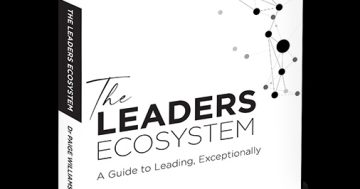Gemma D’Auria, Faridun Dotiwala and Arne Gast* say successful leadership at scale involves the whole organisation and includes communication, role-modeling, and system reinforcement to sustainably shift organisational ways of working.
 Recently we attended a discussion in which a head of learning and development, delegated the task to build leadership capabilities, was now required to show results.
Recently we attended a discussion in which a head of learning and development, delegated the task to build leadership capabilities, was now required to show results.
However, building new leadership capabilities entails changing and learning new behaviours; few change after simply receiving training.
This leader wasn’t set up for success, as the responsibility was not coupled with a broader mandate to tweak other organisational elements.
Most people change behaviour and learn new competencies if superiors explain and role-model these new behaviours, and if incentive systems and the model and culture of an organisation reinforce them.
To create lasting impact at scale, organisations must adapt systems, processes and culture to enable the leadership program, accomplished through the Influence Model.
Many leadership development interventions do not follow this approach.
Indeed, culture initiatives and other health interventions are often run separately from leadership development, which not only diminishes the effectiveness of each initiative but, in worst case scenarios, confuses employees.
Our research suggests that leadership development is most successful if it is embedded in a set of organisational interventions that include – in addition to leadership development interventions – three elements:
- Senior leaders across the organisation (especially the CEO and executive team) role-model behaviours.
Organisations with successful leadership development programs are 4.9 times more likely to have senior leaders role-model desired behaviours in the context of the programs (for example, by acting as program faculty, project sponsors, mentors, or coaches).
- The organisation communicates, fosters understanding, and creates conviction for the desired behaviours and competencies, across the organisation, in a structured and deliberate way.
This can be done by emphasizing that the organisation is only as strong as its people, publicly committing to developing internal talent, and communicating the importance of the new way of leading. - Formal mechanisms such as the performance management system, the talent review system, the organisational structure and key processes reinforce required changes in competencies.
Organisations with successful leadership development programs are 5.6 times more likely to adapt their formal HR systems to reinforce the leadership model and desired behaviours (for example, recruiting, performance evaluation, compensation, and succession planning).
Another key success factor is ensuring program objectives, metrics, tracking mechanisms and governance are clearly formulated and in place, which had a multiple of 3.3 times.
One consumer electronics company was facing a steep, multi-year performance decline, and leadership realised that the organisation required reinvention.
This was not only about strategy, processes and organisation structures, but also cultural change.
The organisation invested in building leadership capabilities required for the transformation and established new practices focused on three critical behavioural themes: “Team up to excel,” “Eager to win,” and “Take ownership.”
It started with the top team, which went through many sessions of addressing the elephants in the room, formulated their collective vision for the future, and practiced the new leadership behaviours.
The next challenge was getting the rest of the organisation to this level.
The organisation embedded culture as one of its five transformation pillars, ensuring it was front and centre.
They then chose a holistic approach, not only focused on capability-building, but also creating the right external environment to enable the desired behavioural shifts.
This included engaging their top 300 leaders in live summits, bringing the top 1,200 leaders through a structured leadership development journey, coaching leadership on the importance of role-modelling and specific symbolic actions to signal the change, and revamping the performance management system to link incentives to the extent that employees lived the desired behaviours.
The impact could be measured in two ways.
First, share price recovered the dip from preceding years.
Second, metrics tracking the extent to which the organisation was living the new culture increased significantly.
In conclusion, organisations must ensure that the broader ecosystem directly supports and reinforces the shift in behaviours, skills and mindsets promoted by the leadership development program: the final core principle that we outline in our book, “Leadership at Scale.”
*Gemma D’Auria supports organisations to build capabilities, develop leaders, and drive culture transformations in support of stronger financial performance and health. Faridun Dotiwala is a writer at McKinsey. Arne Gast leads McKinsey’s Organisation Practice across Asia–Pacific.
This article first appeared at mckinsey.com











